May 14, 2025 | 07:33 GMT +7
May 14, 2025 | 07:33 GMT +7
Hotline: 0913.378.918
May 14, 2025 | 07:33 GMT +7
Hotline: 0913.378.918
As one of the pioneering localities in implementing the Project "Sustainable Development of One Million Hectares for Specialized Farming of Rice Linked with High-Quality and Low Emission Associated with Green Growth of the Mekong Delta by 2030" (the One Million Hectares Project), Can Tho city made a timely decision by launching a pilot model during the Summer-Autumn crop of 2024. This was a bold move, as this off-season crop often poses challenges due to unfavorable weather and natural conditions.
After more than a year of implementation, the pilot model at Tien Thuan Cooperative (Thanh An commune, Vinh Thanh district) has shown many positive signs, including improved rice yield and quality, along with increased profits for farmers.
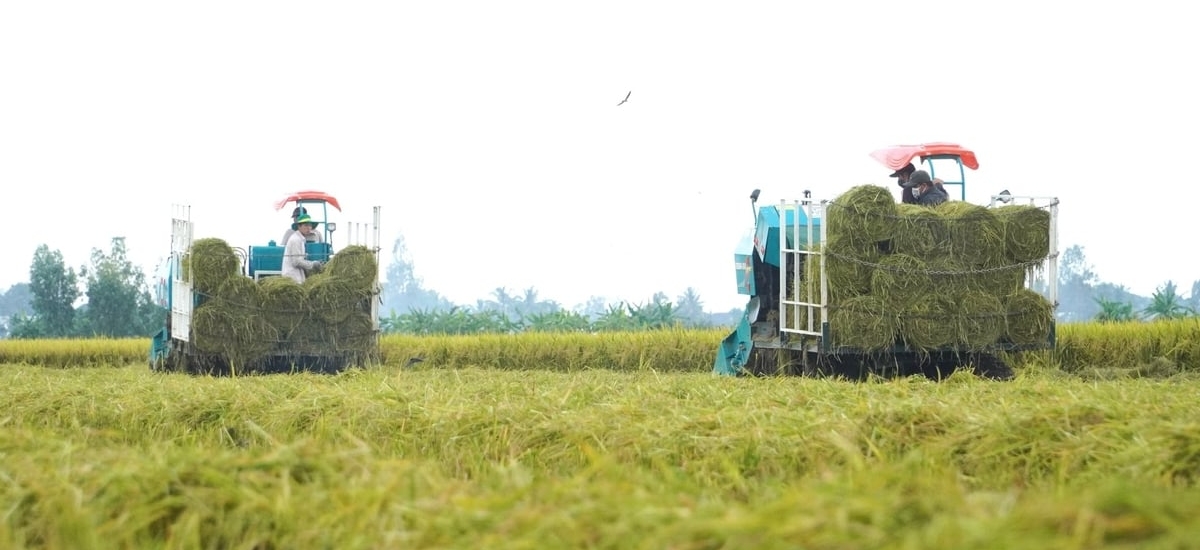
The rice value chain in Can Tho city has been enhanced by utilizing post-harvest straw. Photo: Kim Anh.
Notably, the model has contributed to expanding the rice value chain by promoting straw circularity. Post-harvest straw is used as a substrate for mushroom cultivation and then repurposed to produce organic fertilizer. This solution helps farmers increase profits by an additional VND 9-11 million per hectare, while also reducing waste and pollution.
From a technical perspective, the pilot model has reduced seed usage to just 60-70 kg per hectare, helping to cut production costs. Farmers have boldly applied technology and mechanization in sowing, such as cluster sowing with embedded fertilizer, row sowing, and the use of agricultural drones, to reduce labor and optimize efficiency.
Fertilizer use has decreased by 15-30% across crop seasons, contributing to reduced environmental pollution and improved soil health. As a result, the model has recorded lower pest and disease rates compared to conventional farming areas. The number of pesticide applications has also dropped significantly, to just 4-5 times per crop.
In the 2024-2025 Winter-Spring crop, although many fields were attacked by rice leaf folders and white-backed planthoppers, those that applied the high-quality rice cultivation protocol experienced lower infection levels. The rice plants were healthier and grew 5-8 cm taller than those in fields not following the technical handbook.
In terms of economic outcomes, rice yields in the pilot model were about 500kg per hectare higher than in control fields. Although official measurements of greenhouse gas emissions have yet to be released, a significant reduction in emissions is clearly noticeable.
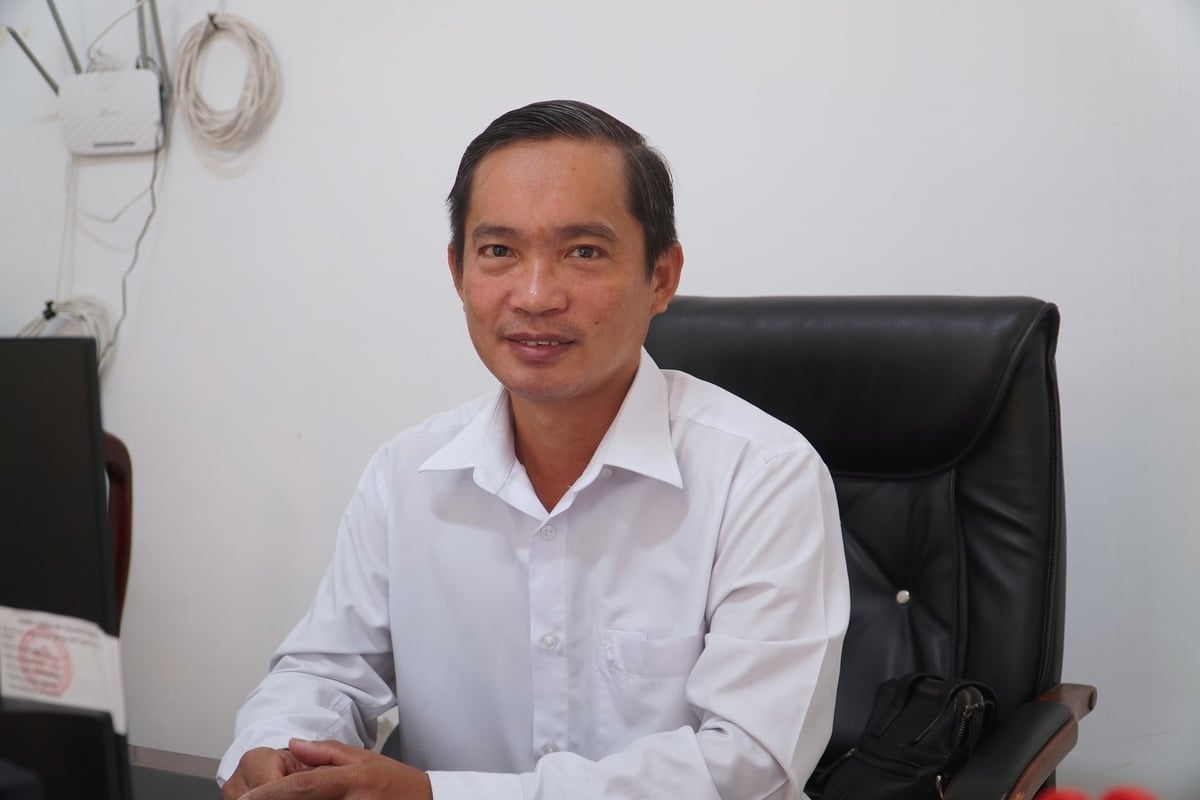
Mr. Tran Thai Nghiem, Deputy Director of the Department of Agriculture and Environment of Can Tho city, shares the results the locality has achieved after more than a year of implementing the Project. Photo: Kim Anh.
According to Mr. Tran Thai Nghiem, Deputy Director of the Department of Agriculture and Environment of Can Tho city, during the 2024-2025 Winter-Spring crop season, although rice prices showed a downward trend, the models implemented under the Project still delivered promising results. This is an encouraging sign, demonstrating that the cultivation model can maintain long-term effectiveness even amid market fluctuations.
Building on this success, Can Tho city has expanded the high-quality, low-emission rice cultivation model to four key rice-growing districts: Co Do, Thoi Lai, Vinh Thanh, and Thot Not, covering a total area of 30,000 hectares. These areas had previously participated in the VnSAT project and were already familiar with technical packages such as “One must, five reductions,” and are now integrating the new cultivation methology.
However, during the implementation process, the One Million Hectares Project has revealed several challenges that need to be addressed to ensure sustained and long-term effectiveness.
One major challenge lies in the collection and transportation of straw, which is bulky and difficult to handle, especially with the limitations of the current waterway infrastructure. Additionally, the adoption of alternate wetting and drying irrigation practices requires upgrades to the irrigation system, particularly the construction of more pumping stations. Based on recent assessments, Can Tho city will need approximately 50 new pumping stations to meet the requirements of the new cultivation practices.
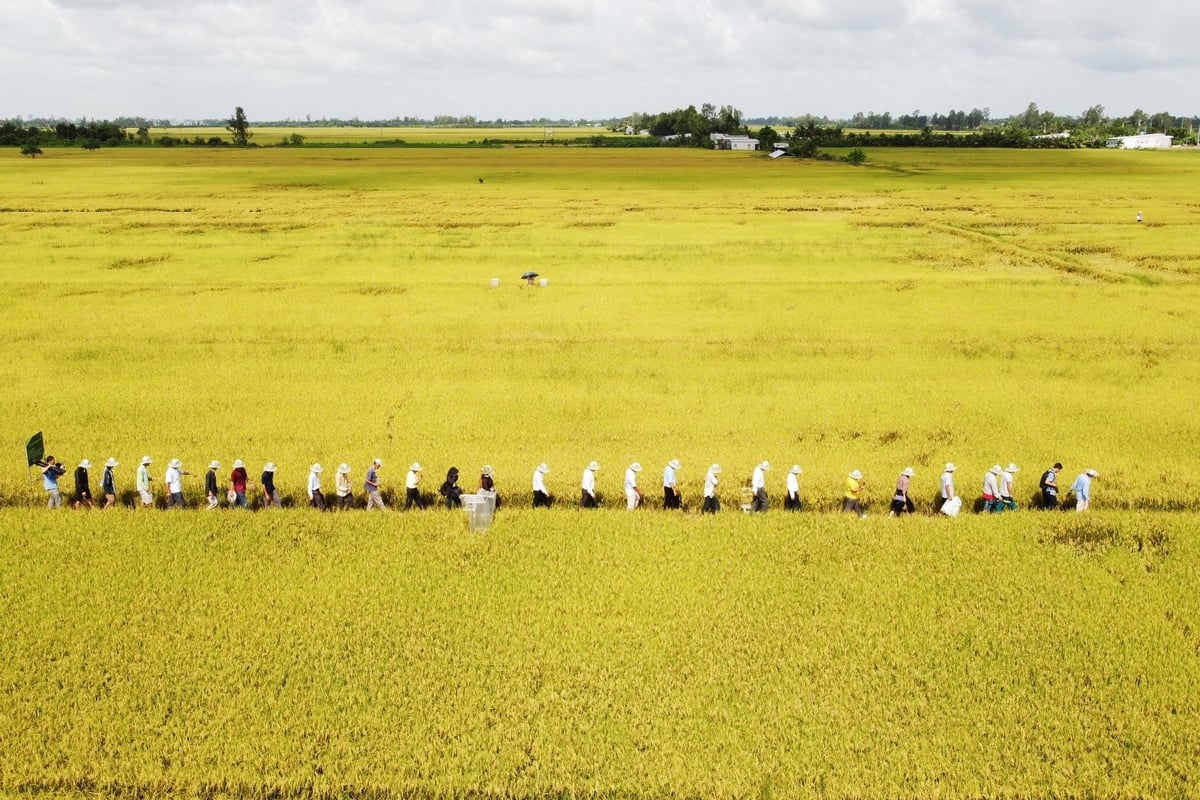
Can Tho city plans to scale up the implementation of the Project across the entire city, covering over 70,000 hectares by 2025. Photo: Kim Anh.
In addition, the linkages between enterprises, cooperatives, and farmers remain insufficiently tight. Although some businesses are highly committed, they still face resource constraints when it comes to expanding and investing in these value chain linkages. This bottleneck needs to be addressed to ensure the long-term sustainability of the One Million Hectares Project.
Not only in Can Tho city, but the province of Soc Trang is also actively implementing the Project. The province currently cultivates over 320,000 hectares of rice annually, with more than 90% of its production ranking among high-quality, specialty rice varieties, equivalent to around 1.92 million tons.
Starting from an initial pilot model at Hung Loi Cooperative (Long Phu district), Soc Trang has expanded to seven additional models applying high-quality rice production processes, each covering 30-50 hectares.
Mr. Tran Vinh Nghi, Head of the Crop Production and Plant Protection Sub-Department of Soc Trang, enthusiastically shared that the implementation of the Project has enabled mechanization to “penetrate” every rice field in the province. At present, 100% of the cultivated area has been mechanized in terms of land preparation and irrigation.
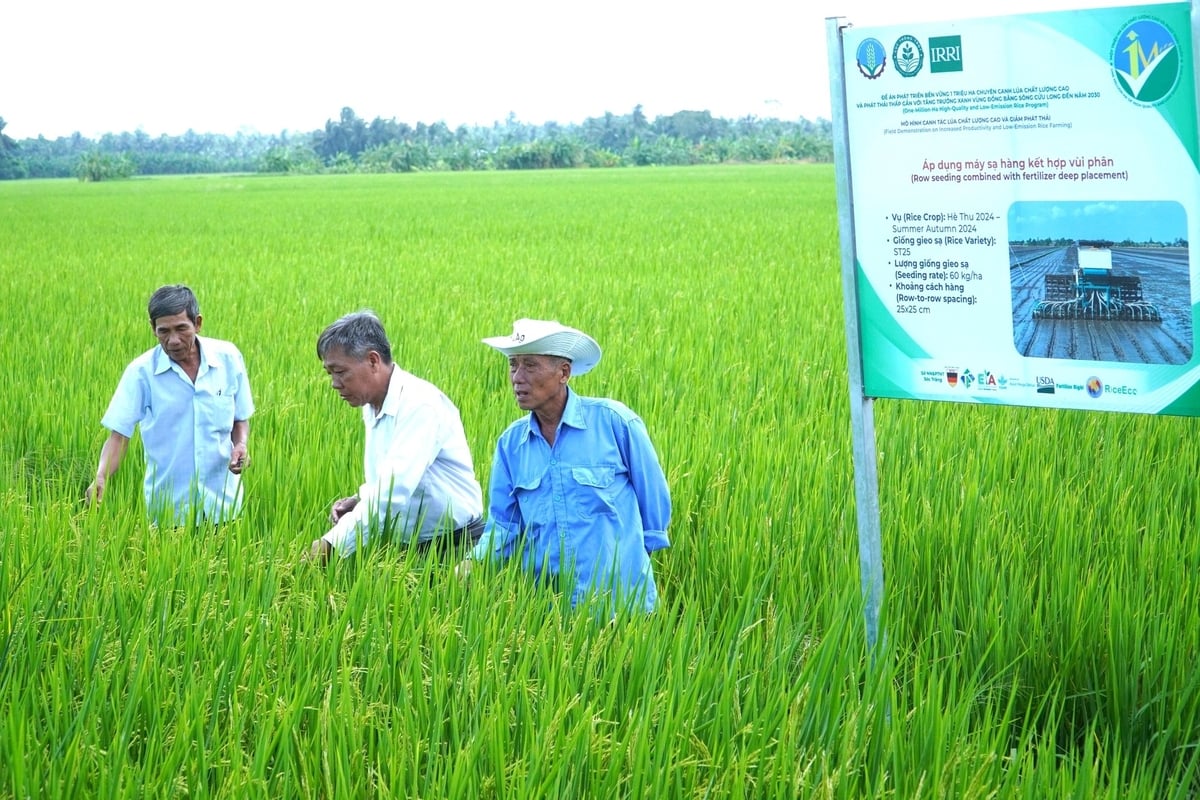
The pilot model in Soc Trang province has completed two crop seasons, which are Summer-Autumn 2024 and Winter-Spring 2024-2025. The province is currently implementing the Summer-Autumn 2025 season. Photo: Kim Anh.
Notably, 20% of the rice-growing area has applied drones for fertilization, 24% has used drones for pesticide spraying, and 98% of the rice fields are harvested using combine harvesters. These figures indicate that high-tech agriculture is no longer a distant concept for farmers in Soc Trang.
According to Mr. Nghi, expanding high-quality rice cultivation models allows farmers to “see with their own eyes and hear with their own ears,” directly experiencing the practical benefits. This transformation is further supported by the active involvement of technical agencies, businesses, and international organizations in providing training, input-output support, and strengthening farmers’ capacity to organize production.
With synchronized investment in infrastructure across raw material zones, today’s pioneering models will lay the foundation for broader replication in the future, fundamentally shifting farmers’ traditional production practices.
According to the plan, Soc Trang province aims to reach 38,000 hectares of land participating in the Project by 2025, and expand to 72,000 hectares by 2030. This goal not only reflects a strategic vision but also demonstrates the province’s strong commitment to accompanying farmers on the journey toward a greener, cleaner, and more sustainable production era.
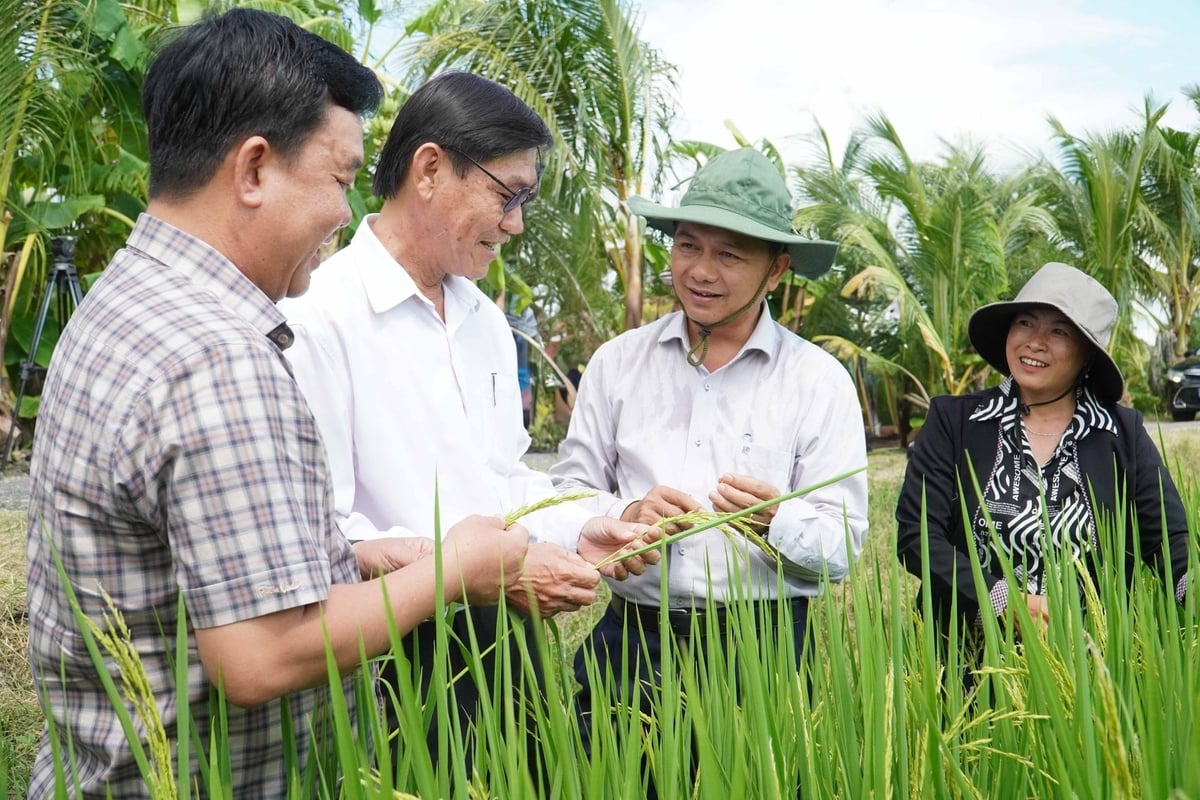
Mr. Tran Van Lau, Chairman of the People’s Committee of Soc Trang province (second from the right) visits the Project’s pilot model at Hung Loi Cooperative (Long Phu district). Photo: Kim Anh.
After more than a year of implementing the Project, seven pilot models applying high-quality, low-emission rice cultivation practices are nearing completion. Specifically, the pilot models in Can Tho city, Kien Giang province, and Tra Vinh province have successfully completed three consecutive crop seasons: Summer-Autumn 2024, Autumn-Winter 2024, and Winter-Spring 2024-2025.
The pilot model in Soc Trang province has completed two crop seasons, which are Summer-Autumn 2024 and Winter-Spring 2024–2025. The province is currently implementing the Summer-Autumn 2025 season. In Kien Giang and Dong Thap, the pilot models have completed the Autumn-Winter 2024 and Winter-Spring 2024–2025 seasons and are now moving forward with the Summer-Autumn 2025 crop.
* Currency exchange rate: 1 USD = 25,570 VND (Vietcombank).
Translated by Kieu Chi
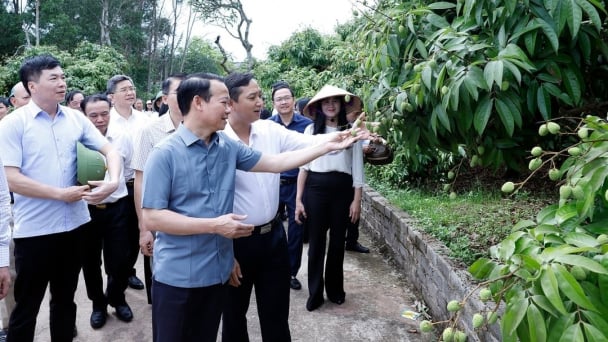
(VAN) Agriculture and environment sector experienced a 3.74% increase in growth during the first four months of 2025, with exports surpassing 21 billion USD. This growth was sustained by effective reforms and a trade surplus.
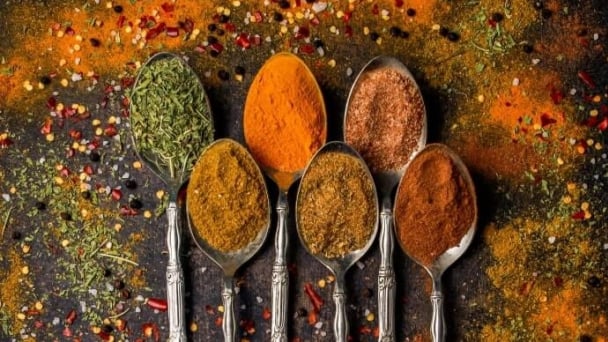
(VAN) Taiwan offers a promising market for Vietnamese turmeric; however, it enforces stringent standards, particularly concerning residual additives, colourants, and substances with potential carcinogenic effects.

(VAN) Through activities at Vietnam Sea and Island Week 2025, solutions will be developed to fully harness the potential and advantages of Vietnam's marine economy.
![Multi-channel, multi-directional Vietnamese agricultural markets: [4] EVFTA and the 0% tax advantage](https://t.ex-cdn.com/nongnghiepmoitruong.vn/608w/files/linhnhp/2025/05/12/day-chuyen-che-bien-tom-tai-1-nha-may-cua-sao-ta-205536_359-1044193.jpg)
(VAN) The near-complete elimination of import tariffs on Vietnamese goods makes the EVFTA the highest commitment the EU has ever made to a partner in its signed trade agreements.

(VAN) Deputy Minister Phung Duc Tien hopes that China will facilitate the entry of Vietnamese agricultural products into its market and accelerate customs clearance at border gates.
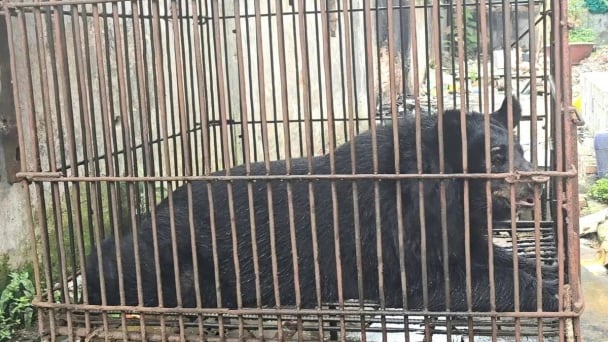
(VAN) On May 10, the Animals Asia Foundation and the Hai Phong Crop Production and Forest Protection Department successfully rescued a nearly 20-year-old sun bear that was being kept by locals.
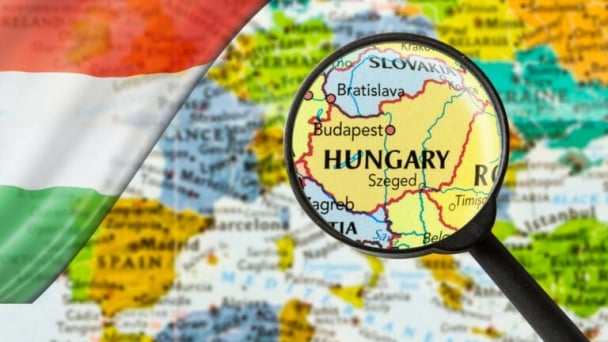
(VAN) Does Hungary have an opportunity to expand poultry production in the coming years despite the pressure from avian influenza and challenges of the trade war?